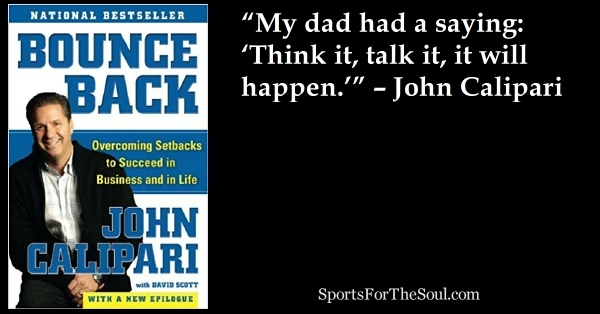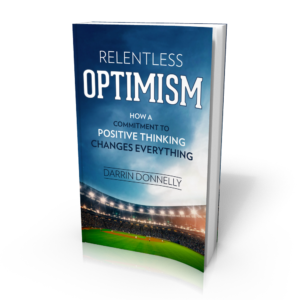 A crucial—but often overlooked—step in accomplishing a major goal is to take time each day to visualize the positive outcome you hope to experience.
A crucial—but often overlooked—step in accomplishing a major goal is to take time each day to visualize the positive outcome you hope to experience.
Too many of us ignore the awesome power of visualization. We blow it off as a time-waster, nothing more than mindless daydreaming or wishful thinking.
But ignoring the power of positive visualization is a huge mistake.
The fact is, many of the world’s greatest achievers make positive visualization a vital part of their day and swear by the power of this simple technique.
One big proponent of positive visualization is Kentucky basketball coach John Calipari. Here’s how Coach Cal used positive visualization to fulfill his dream of becoming a Division 1 head coach…
My dad had a saying: “Think it, talk it, it will happen.”
That’s exactly what I did during my third and final year [as an assistant coach] at Pitt. I started to really think seriously about what my future in the business of basketball would be. Almost every day when I was at Pitt, I would go for a run around campus.
During those runs, I created a scenario where I was the head coach of a basketball program, and each day I would go through—in my mind—what I would be doing that day if I had my own program.
Each and every day during my run, I’d envision different scenarios that I would encounter once I had my own program. What style of basketball would we play? What would our uniforms look like? Where would our logo be placed on our home floor? How could I help with fund-raising? What was the best outlet to have my coach’s show on both radio and television?
I even went as far as to start picking out furniture for our basketball offices!
[Those visualization exercises] gave me some concrete goals to strive for as I began my quest to land a head job. Those goals, almost by definition, were positive thoughts constantly driving me in everything I was doing during my time at Pitt.
– John Calipari, from his book Bounce Back
There are two important takeaways from Coach Cal’s visualization technique.
First, his visualization was extremely detailed. He vividly imagined the day-to-day details of what living his dream would be like. He visualized the exact school he would be coaching at, what the gym would look like, what his office would look like. Details, details, details.
Second, Coach Cal didn’t limit his visualization to ideal, rosy conditions. He didn’t only visualize holding up a trophy at the end of the season. He also imagined exactly how he would deal with the challenges and obstacles a coach would certainly have to face. He thought about how he would handle the difficult tasks of fund-raising, getting media deals set up, and recruiting against much larger schools.
Take some time each day to visualize your biggest dreams coming true. What does success look like to you? In your dream scenario, where do you live? Who are you spending your time with? What are you doing each day if you’re living your dream?
Envision yourself enjoying the end result of your success. That is, visualize the championship trophy in your hand, your increasing bank account, your book on the bestseller list, your name with “CEO” next to it, etc.
But, also make sure you’re seeing yourself involved in the day-to-day activity of living your dream. See, hear, and smell the details of where you hope to be. Imagine the obstacles you’ll face along the way and then see yourself overcoming those challenges. The more detailed, the better.
Visualization like this triggers your subconscious mind into action so that it will direct your steps toward your dreams. It also gives you the self-confidence you need by preparing yourself to overcome the obstacles you’re going to face along the way.
Like anything involving mental toughness, discipline is required to make visualization a part of your daily routine. You have to schedule it and force yourself to do it each and every day.
Don’t ignore this powerful mental training technique. Use the power of visualization to make your dreams come true.







